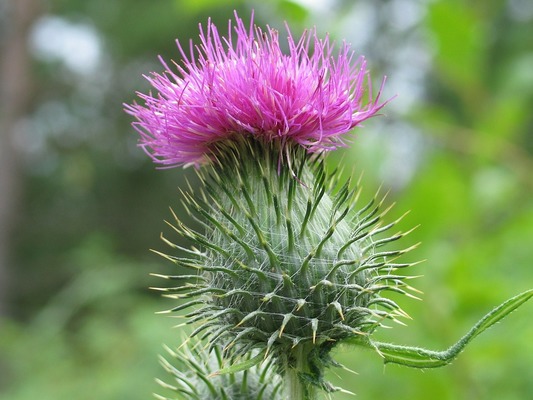On Sunday the Warwick Caledonian Society held an event in Leslie Park and we were entertained with highland dancing, bagpipe and drum music and highland games.
It was very entertaining for all who took the time to stop and become involved. This was the first of what is to become an annual event held on the first Sunday of July.
As a result of enjoying a lovely afternoon I gave some thought to the Scotch thistle and what it represents.
Here in Australia it is another annoying and difficult to control import, in the same category as blackberry, bathurst burr and St John’s Wort!
All difficult to control and special thorns in the side for graziers. As with most of our troublesome plants it was probably introduced as a garden flower, but with each flower capable of producing 20,000 seeds and also reproducing by tiny pieces of root missed when trying to dig them out, it soon became troublesome given the ideal sunny conditions of Australia and in 1856 was declared a noxious plant in Victoria. Given that Melbourne was only founded in 1835 it didn’t take the thistle long to become a widespread problem.
In Scotland however it is the national emblem, and honoured although surprisingly rare.
There is much discussion as to how the thistle became the revered emblem of Scotland but the most common tale is that during the reign of Alexander III from 1249-1286 a Norwegian King Haakon landed at the Coast of Largs in Scotland at night to surprise the clansmen while they were sleeping.
To further the surprise element they removed their footwear so as to approach undetected. However they were also surprised and stood on the prickly thistle bushes. The cries of pain alerted the sleeping clansmen and defeat was averted!
The first use of the thistle flower as a royal symbol of Scotland was on silver coins issued by James III in 1470. The thistle flower is the oldest known “National Flower” and is known world-wide, as the symbol of Scotland today. The “Order of the Thistle” was founded in the mid-1500s by King James V and the motto of this order roughly translated means “Don’t Mess With Me”! Probably the Norwegian army during the barefoot attack at Largs could agree with this sentiment.
In Australia there are at least three different thistles known as Scotch thistle, all with similar purple flowers and all being widely recognised as noxious weeds, once again proving the point that a weed is only a plant out of place … what is revered in Scotland is an unwelcome immigrant here!
Variegated thistle, so called because of the colour of its leaves, is another plant with a similar flower.
Some of the nicest honey I have tasted was from these plants one year when they were extremely prolific so, although they are a pest and need to be sprayed out on a farm, they do produce a tasty, useful product.
There is another one I have seen growing in paddocks in southern NSW, but whose common name I don’t remember. It had the most vicious thorns of all and much deeper coloured purple flowers and silver foliage and of course, as with all of these and most other troublesome weeds, was growing in paddocks that had been cultivated, providing ideal conditions for germination.
While some of you reading this will think that it is all trivia, I thought it time to provide some fun facts for gardeners:
*Onions are one of the oldest vegetables used as a food source.
*Ancient Egyptians ate onions to give them strength when building the pyramids.
*Onions are listed historically as a leading ingredient in preparations to cure infertility, impotence, headache, hair loss and muscle aches.
*You can tell the outside temperature by listening to crickets. Count the number of chirps in 15 seconds and add 37. This will approximate the temperature in degrees Fahrenheit.
*Figs were the first domesticated crop in the Near East about 11,400 years ago with specimens found in a dig near Jericho.
* Petunias bloom during the day but release their scent at night.
* A pair of doves can produce up to five or six broods a year and the nest usually only contains two eggs. The nest is never left unattended with the male taking the shift from mid-morning until late afternoon and the female sitting overnight.
*Caterpillars are the larval stage of butterflies and moths in the order Lepidoptera and there are over 180,000 species in this classification.
Don’t forget to get your tickets from Danny Lyons in Palmerin Street for the trip to the Qld. Garden Expo at Nambour on Saturday, 8 July. It will be a great day out, with the Expo having over 360 exhibitors and free demonstrations and lectures live each day on eight different stages.
Something for all, whether you are interested in plants, landscaping, garden equipment, fertilisers or food! Come and join us.







